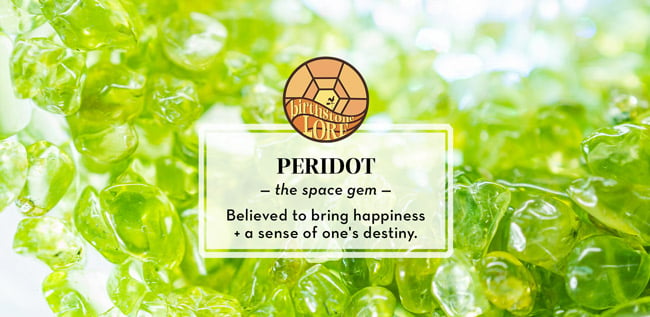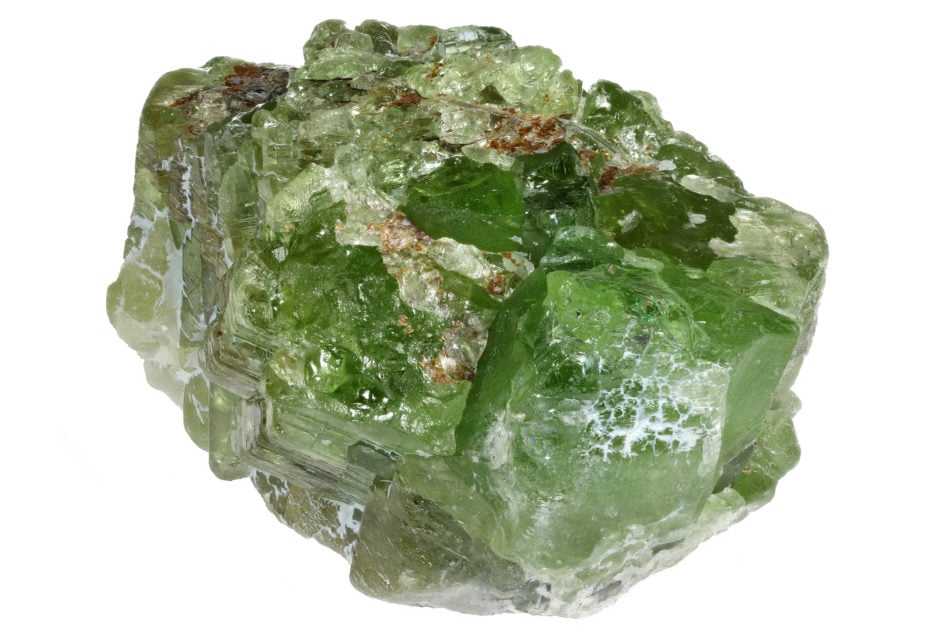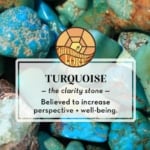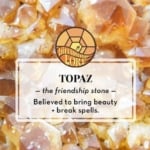August Birthstone — Peridot: The Great Space Gem

The August Birthstone is peridot—an enigmatic gemstone! It is often misidentified and mispronounced.
Did you know that it falls to Earth in some meteorites? It’s also been found on the Moon! That’s why we call it the “space gem.”
The peridot stone is believed to bring happiness and a sense of one’s destiny in life. Learn about the mystery, history, and folklore surrounding this misunderstood gem! Read on.
Peridot Meaning And Folklore
The Egyptians believed this stone was brought to the earth from an “exploding sun” and called it, “gem of the sun.” They would mine the peridot stone at night, believing it absorbed the sun’s rays and released them at night.
The Romans similarly believed that the olive green stone glowed in the dark and called it, “the evening gem.”
In biblical times, it was called chrysolite, which comes from the Greek word chrysolithos, meaning golden stone. There is evidence that suggests peridot was used on the breastplate worn by Moses’ brother, Aaron.
It was believed wearing this gem would protect one from evil spirits as well as things considered to be “terrors of the night.” One would string it on donkey hair and tie it around their left arm for protection. (Do you like superstitions? Read more about superstitions here.)
Setting the stone in gold was believed to increase its powers. Egyptian priests would use goblets encrusted with it to connect to their gods.
In Hawaii, peridot was believed to be tears from Pele, Goddess of Elements. There is even a green beach in Hawaii that is created from olivine that has been ground into sand.
Peridot Metaphysical Properties
The traditional August birthstone is believed to:
- Release negativity and inspire happiness.
- Inspire a calm demeanor and bring a better understanding of one’s destiny and purpose.
- Connect one with their heart chakra and attract love.
- Bring success, mental clarity, and protection.
- Motivate growth.
Misidentifications
Peridot has long been mistaken for emerald. When the Egyptians first discovered this gem, they believed it to be emerald. This mistaken identity has led many historians to believe that Cleopatra’s famous emerald collection was actually peridot.
Peridot misidentification carried into medieval times. Emeralds placed at the shrine of the Three Holy Kinds (Three Wise Men) at Cologne Cathedral in Germany were later discovered to be peridot.
Common Mispronunciation
Many people ask, “How do you pronounce peridot?” or “Is the ‘t’ pronounced in peridot?” Yes, the “t” is pronounced. It sounds like “peh-ruh-daat” when pronounced correctly, though some pronounce it as peh-ruh-doe. Hear how to say it right.
Ambiguous Name Origins
The origins of the name peridot are uncertain. Some believe the Latin word pedoretes, meaning a “kind of opal,” is where this gem got its name. Others think it was derived from the French word peritot, meaning “unclear.”
There are still others who believe the name originated from the Arabic word faridat which simply means “gem.” The origin of its name is one of the many mysteries this gem holds.
More Peridot Facts
Peridot belongs to the olivine family. Olivine is called peridot when it is of gem quality.
Where was it first discovered?
Peridot dates back billions of years and has a long history that includes multiple ways it can be found on earth.
It is believed that the peridot stone was first mined in Egypt around 1500 B.C. on St John’s Island (Zabargad Island, formerly known as the Island of Topazios). To this day, it is the National gem of Egypt.
The first and most common source of this green gem is the mantle of the earth. Peridot and diamond are the only two gemstones that are formed in the mantle.
Peridot is formed closer to the surface than diamonds in what’s known as peridotite rock. It is brought to the surface through volcanic activity and comes in many hues of green, ranging from greenish yellow to a greenish brown.
Does it really come from outer space?
Yes, this beautiful green stone also comes to us in the form of meteorites! Pallasite meteorite (meaning a meteor that has entered the earth’s atmosphere) refers to a stony-iron meteor with the primary silicate mineral being olivine. This gives the meteorite a greenish hue.
Gem quality peridots has been found in multiple pallasite meteorites with many dating back billions of years.
What is it made of?
Made from a magnesium iron silicate mineral, iron gives it the renown green color. Unlike many colored gemstones, it is not an impurity that gives this stone its striking color.
When a gemstone is colored by impurities, it is called allo-chromatic. But this kind is known as idio-chromatic. The prefix “idio” means distinct (whereas “allo” means other).

Famous August Birthstones
A look at some famous peridots throughout history leads us first to the expansive cosmos. Interestingly, it has been found in meteorites, on Mars, and even on the Moon!
Pallasite Meteorite
The Royal Ontario Museum hosts the world’s largest pallasite meteorite. This meteorite was found in 1931 outside of Springwater, Saskatchewan. It dates back 4.5 million years and weighs 117 pounds!
The Pallasite Meteorite is one of three pallasite meteorites found in Canada.
Peridot On The Moon!
A Japanese team examining larger craters on the Moon also found olivine (the raw form of the gem)! From this discovery, there are some who suggest the Moon could also have an olivine rich mantle, like earth.
Peridot Stone: The Largest In The World
The Smithsonian Museum is home to the largest cut peridot in the world. Simply called, “Peridot Stone,” this gem is 311 carats! It originated where they were first mined: Zabargad Island, Egypt.
Looking Ahead: Future Space Gems Coming!
In 2021, NASA’s Perseverance rover collected rock samples believed to be olivine. The samples are not expected to arrive on earth until sometime around 2030.
Peridot Jewelry Care Instructions
Much like emerald, care should be taken when wearing your peridot. Peridot is a great stone for jewelry, but It can fracture with stress or extreme heat exposure.
Alternative August Birthstones
Peridot is not the only gem to honor the month of August! Whichever stone you choose to honor August, each one is abundantly available and easy on your budget.
Sardonyx
The Polish used Sardonyx to honor this month. Sardonyx is a great stone believed to help one become the best version of themselves. It is believed to promote self-control, willpower and integrity.
Spinel
Spinel is another birthstone of the month. This stone has long been mistaken for ruby. Spinel has long been associated with rejuvenation. It is thought to open all chakras and inspire movement of Kundalini energies.
Carnelian
Carnelian is believed to inspire courage, success and creativity (See our necklace below!). It is typically associated with the zodiac sign of Leo. Learn more about Leo here.
Join The Discussion!
Were you born in August? Do you have a peridot ring?
If you were to choose a new gem to represent August, which would you choose?
We would love to hear from you in the comments below!
Learn more about other birthstones here.

Tamra Albright-Johnson
Tamra Albright-Johnson specializes in the unique histories and folklore around rare stones. She owns and operates a custom jewelry shop with her daughter, Kennie, in Iowa.






Being born August 31 I never really liked the color of the peridot, but this article helped me to really make it a lot more interesting , a lot I didn’t know about it. Comes from space and goes back to the Egyptians and more. Really cool.
I have worn the Perodot as a symbol of my
August 29th birthday since my teens. However, I honestly never emotionally connected with it. I’m so happy to hear that there are other stones I can wear. Thanks for the great article.